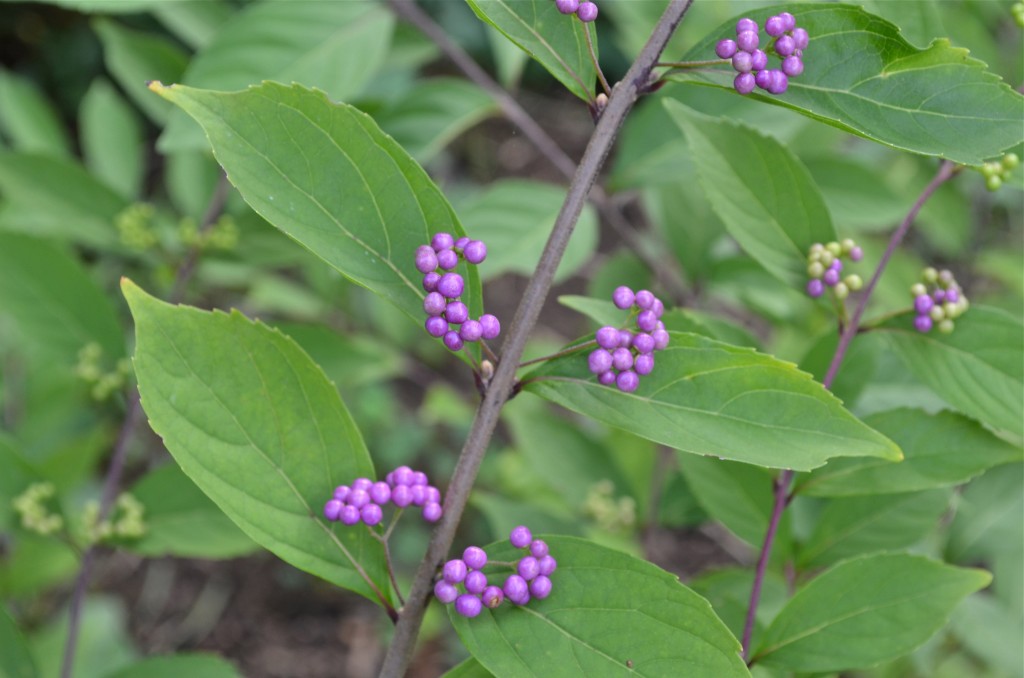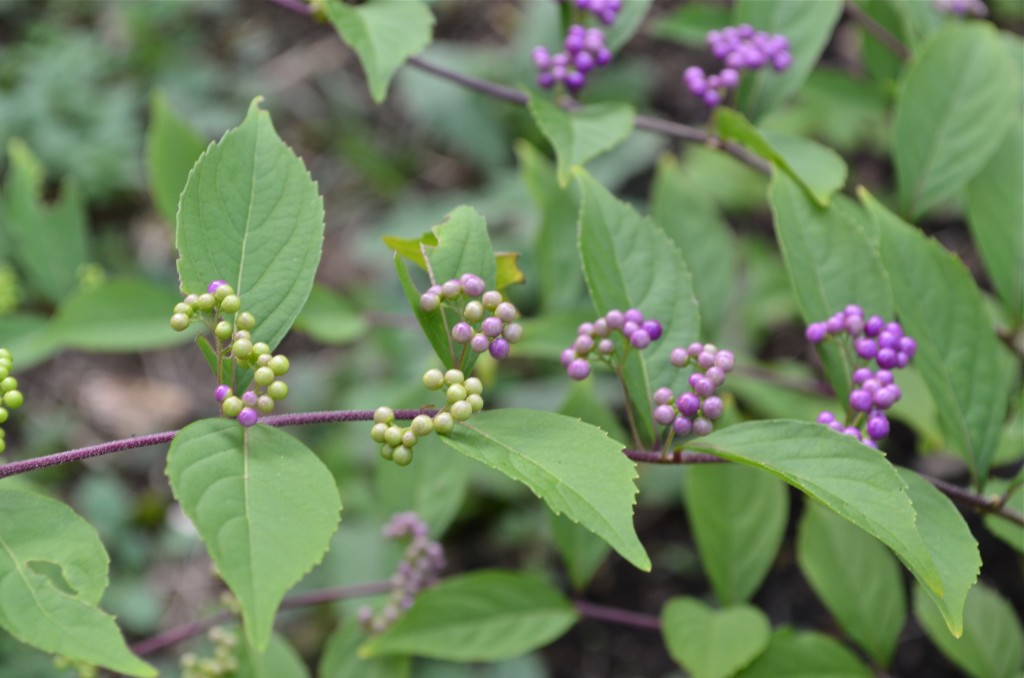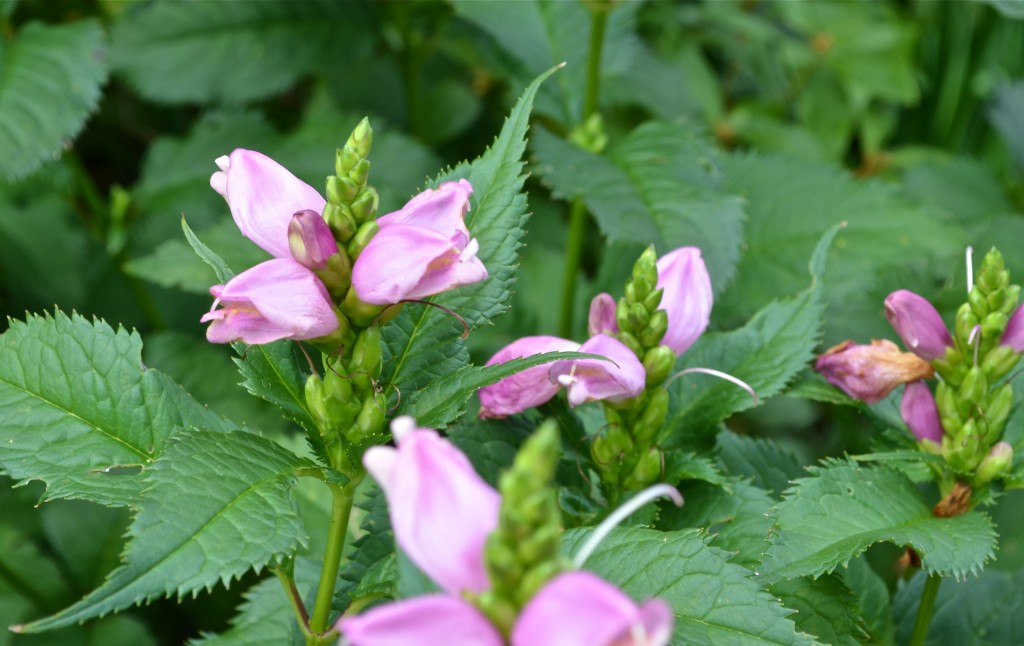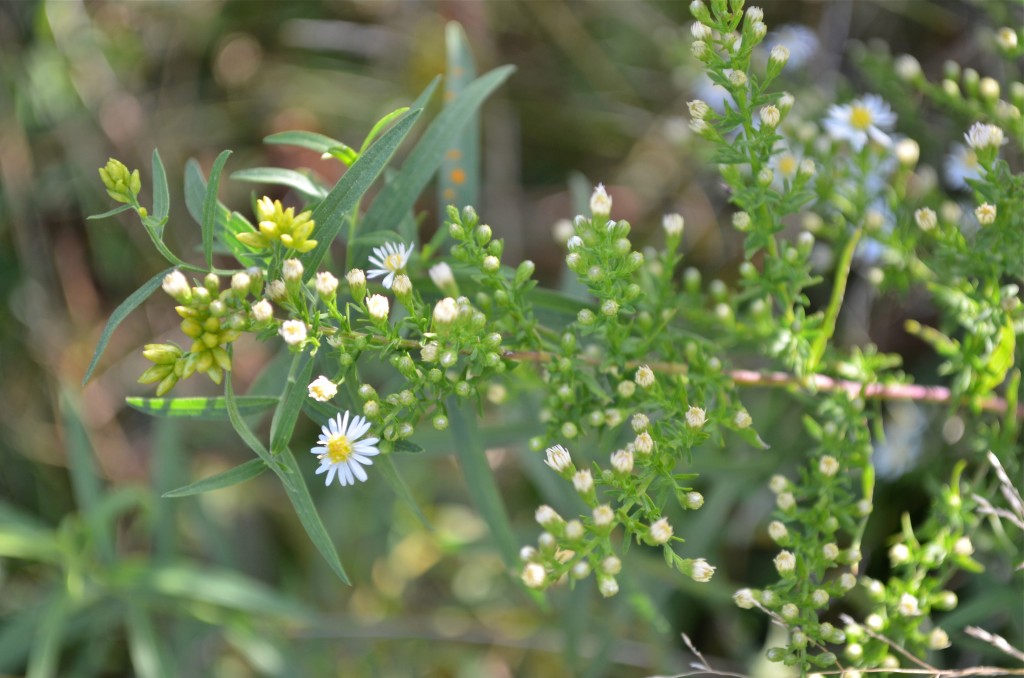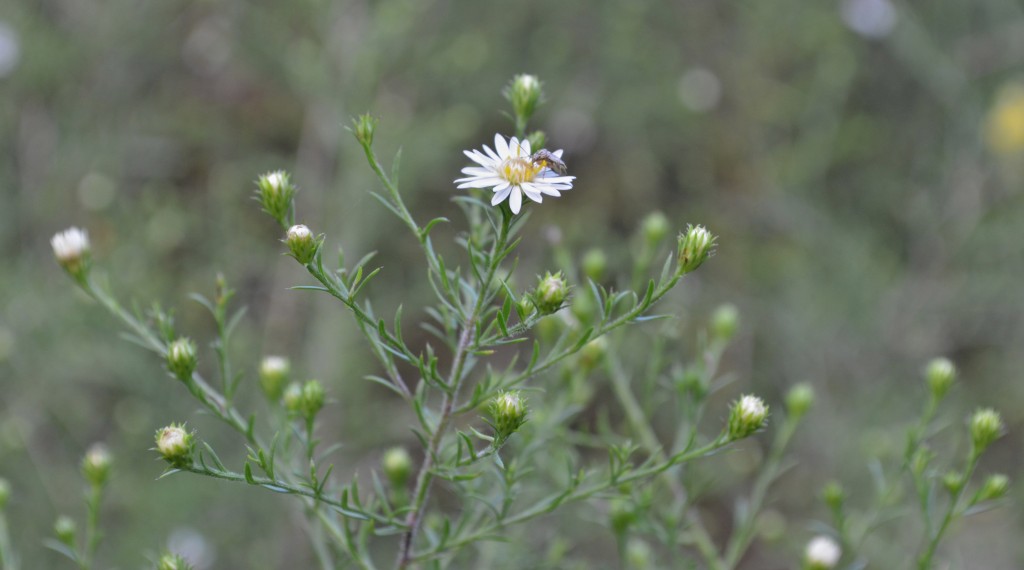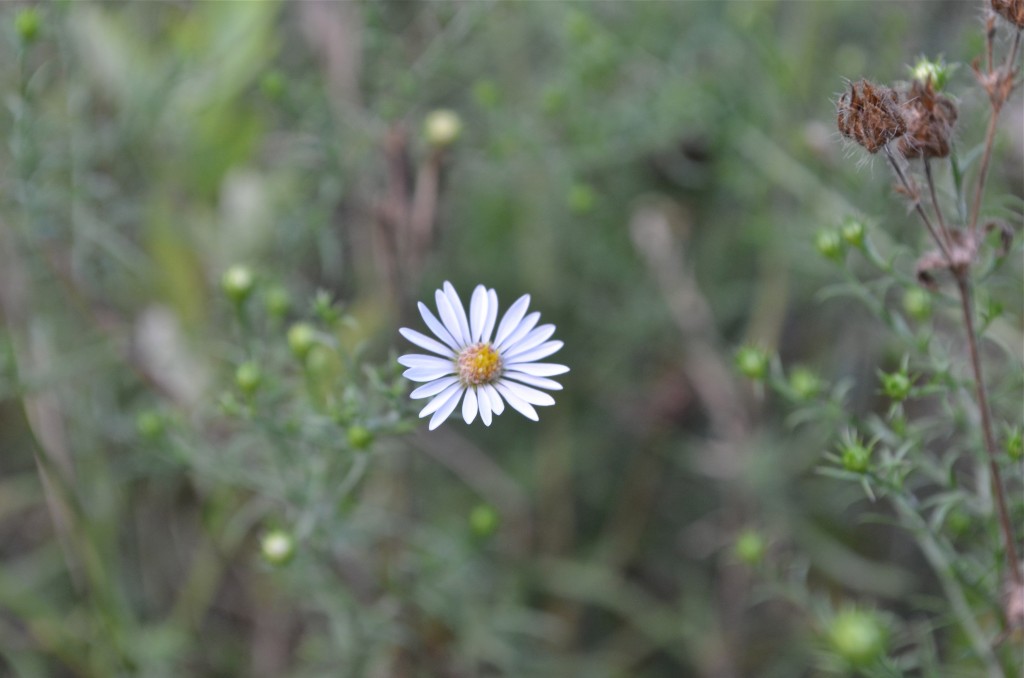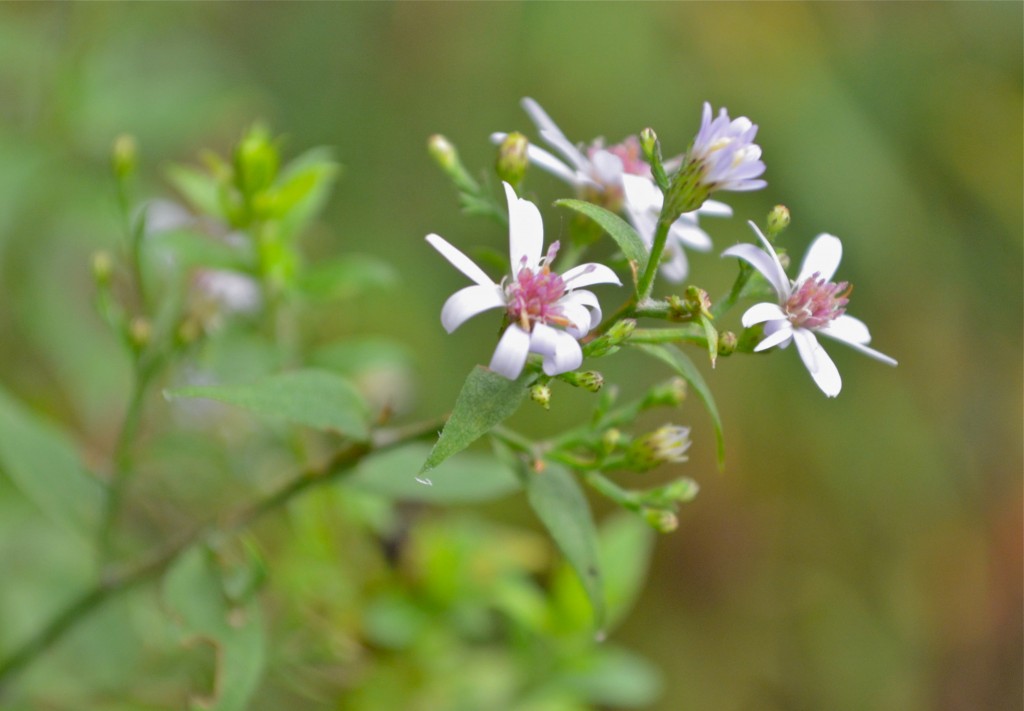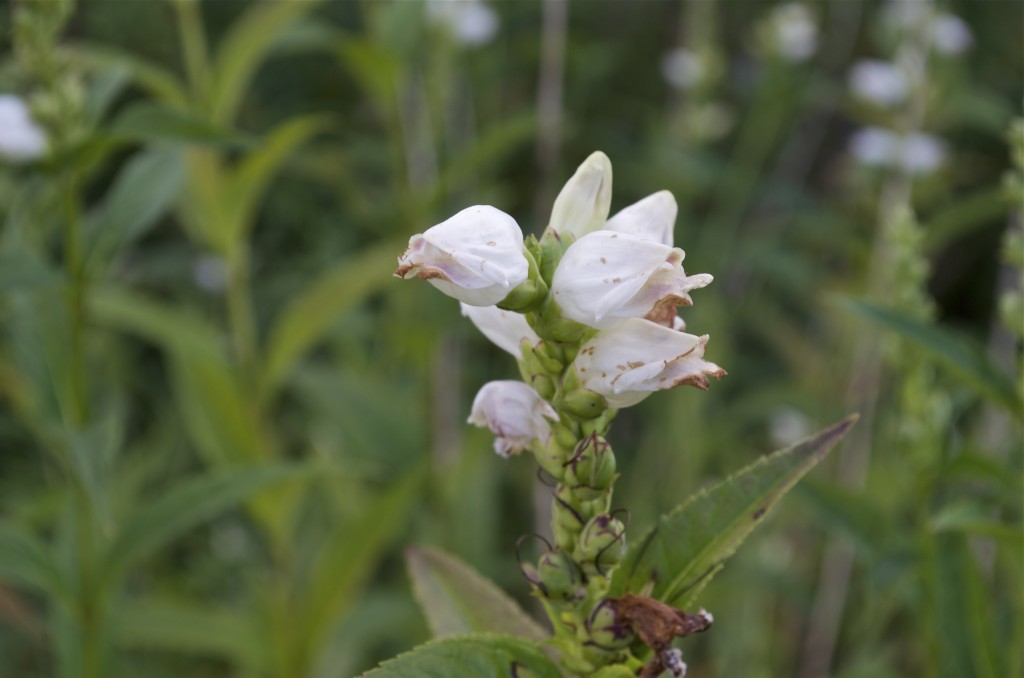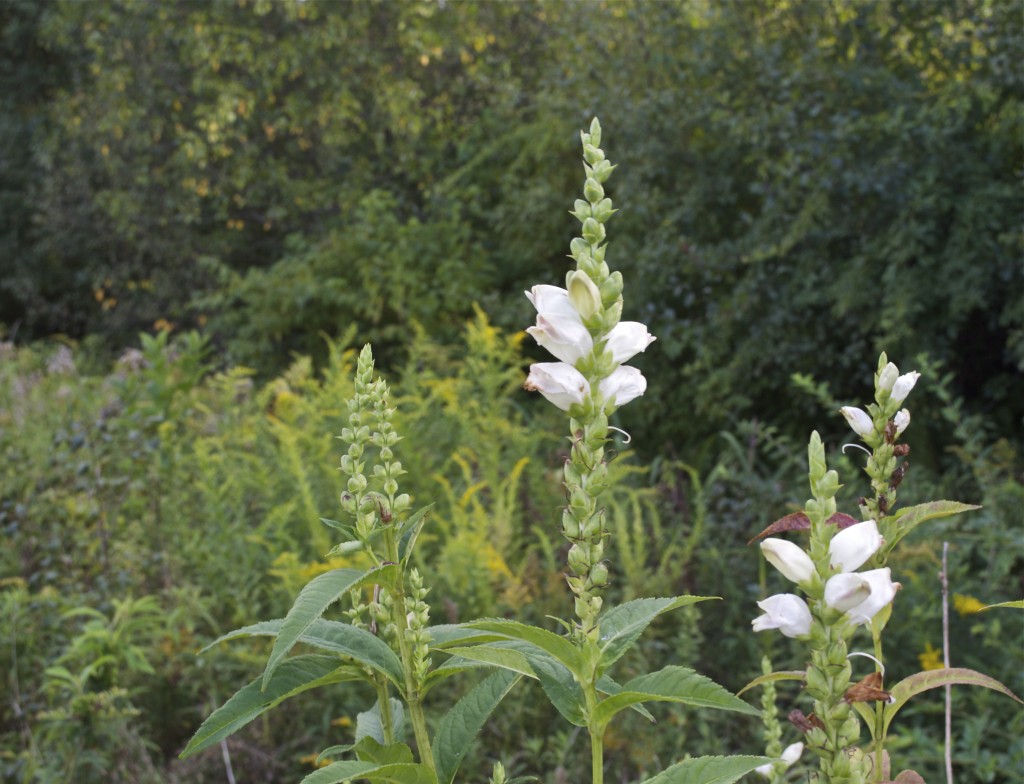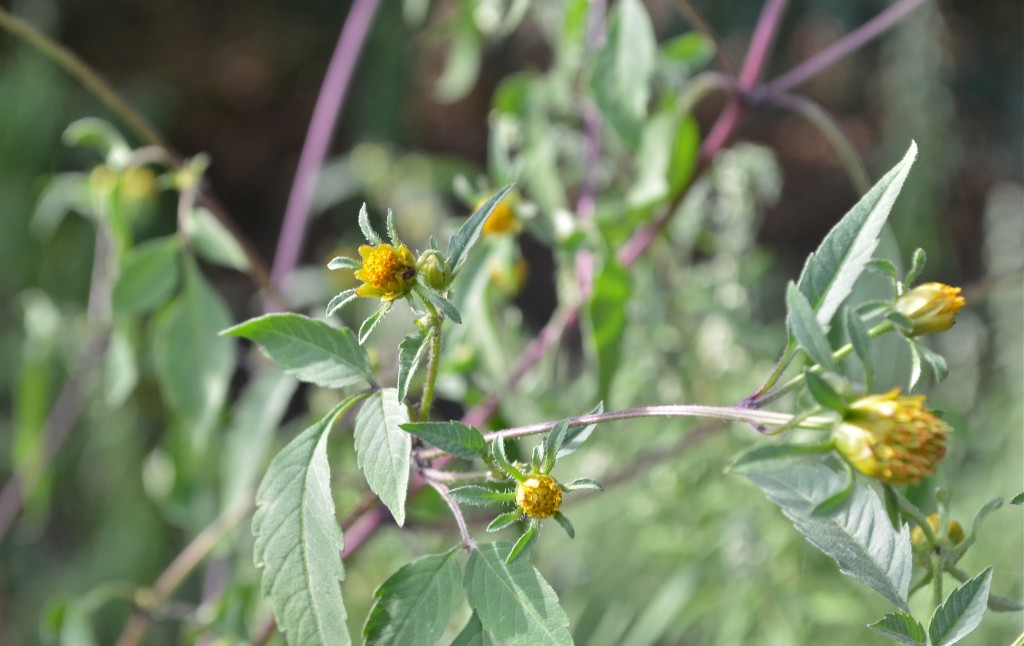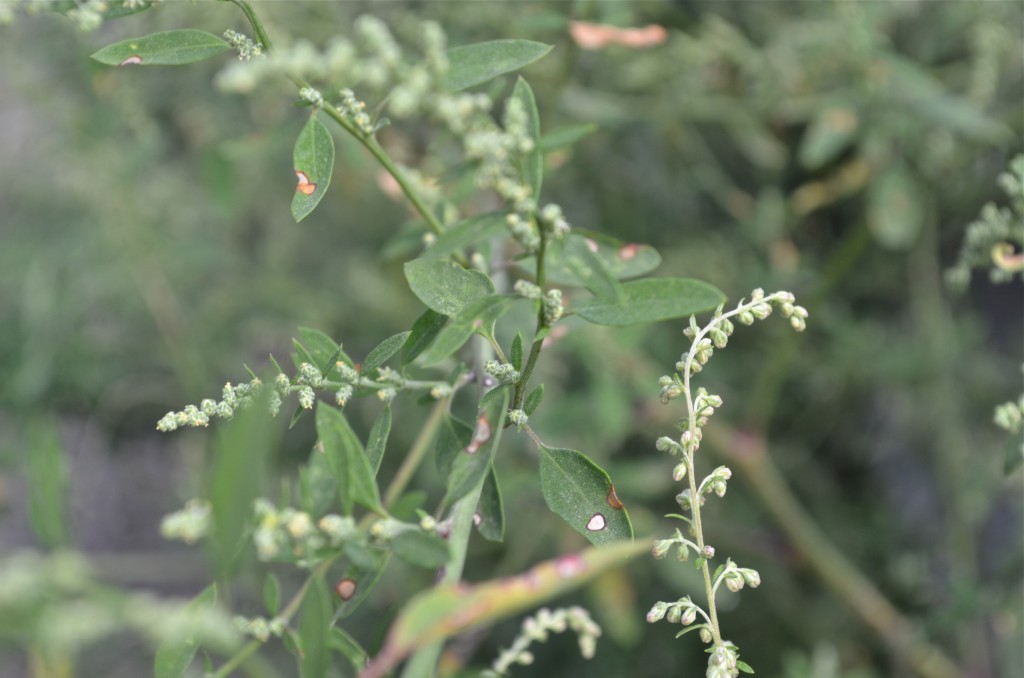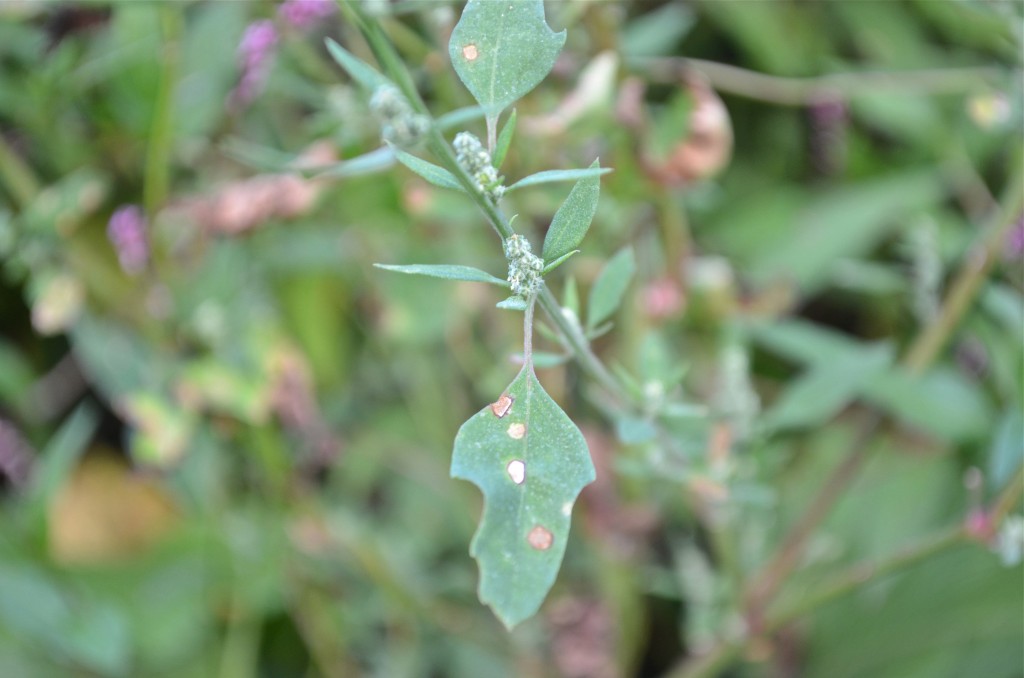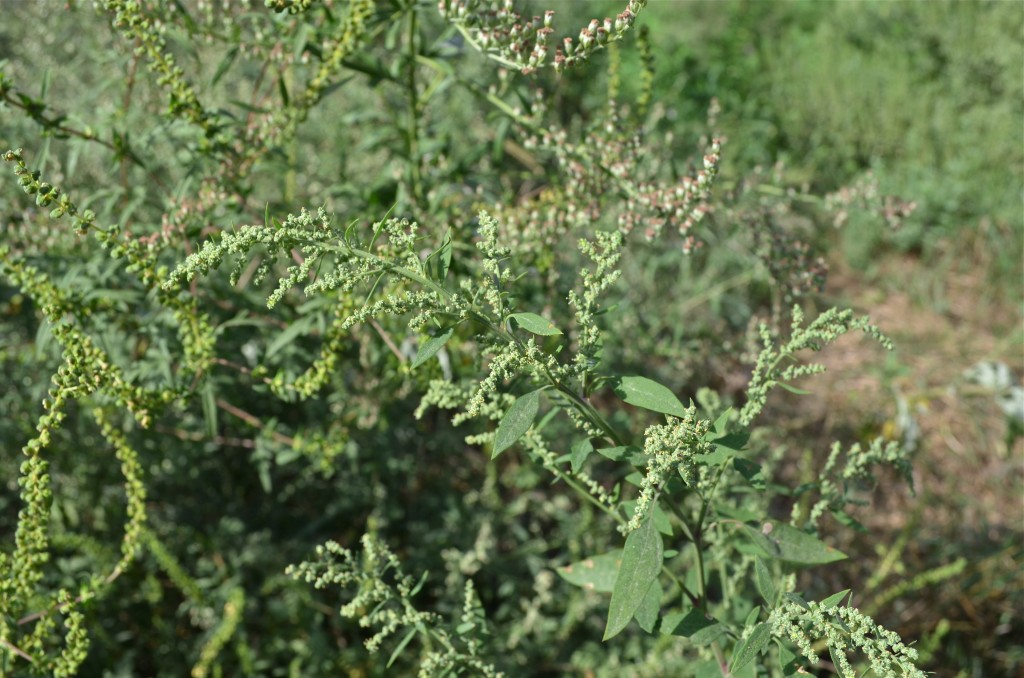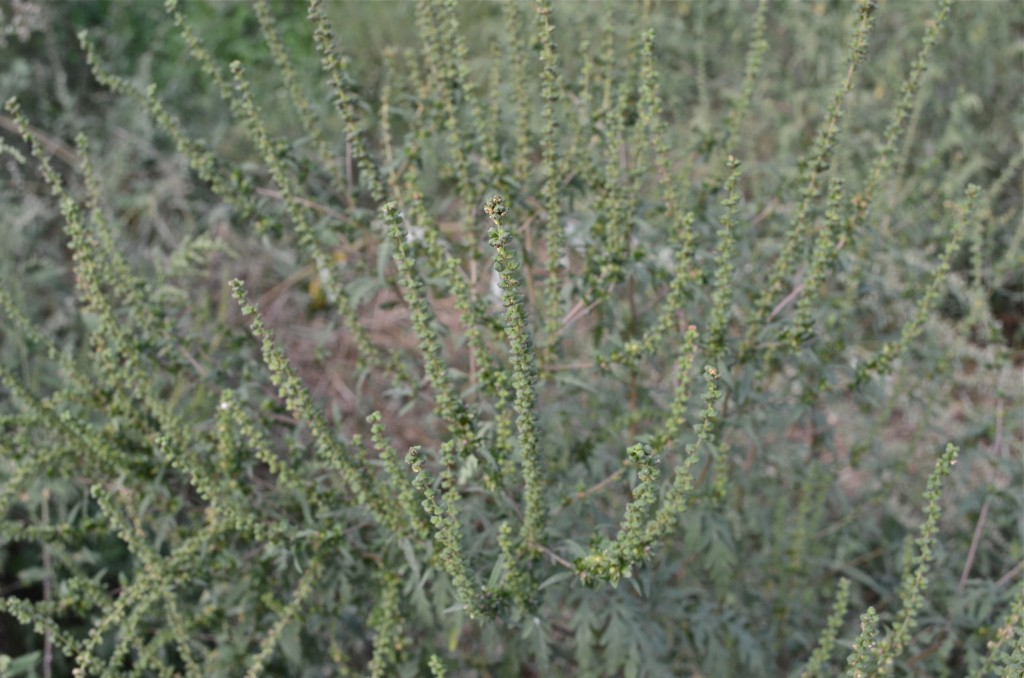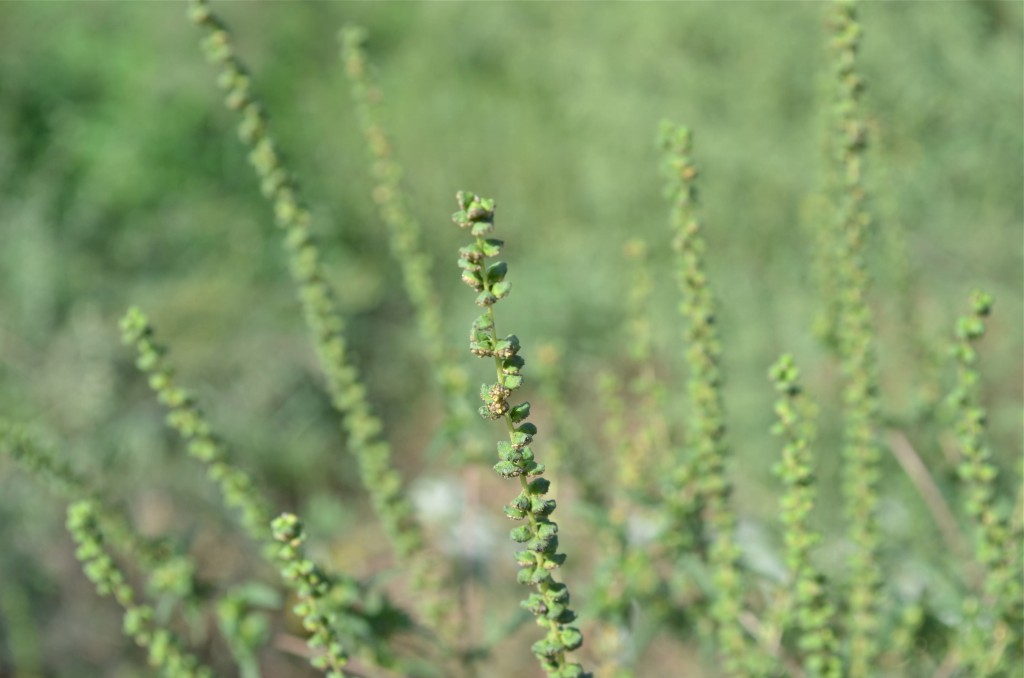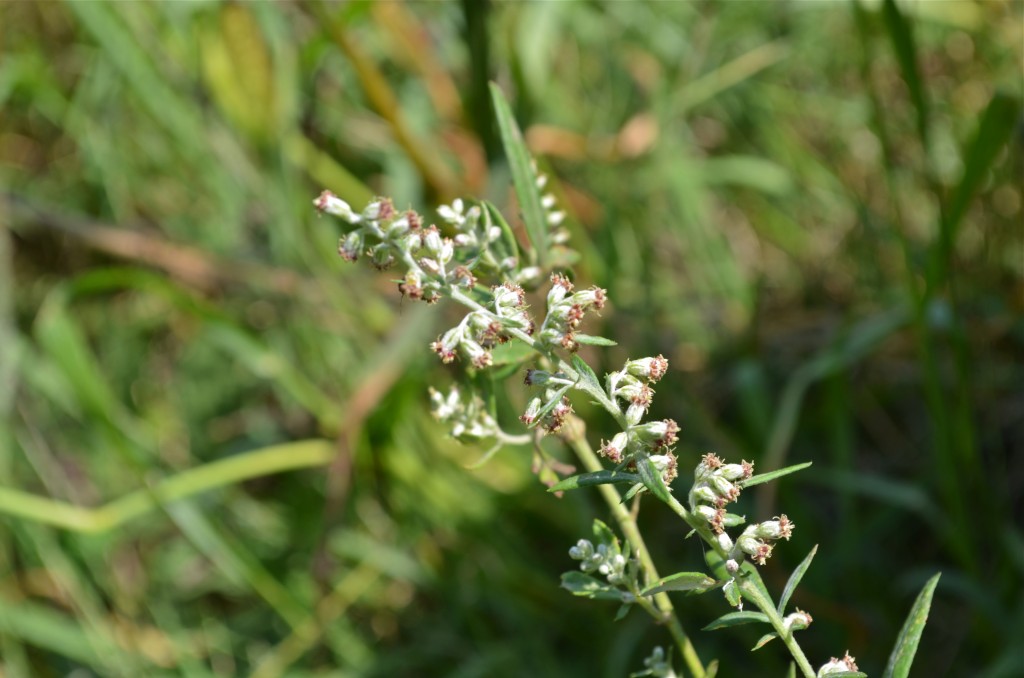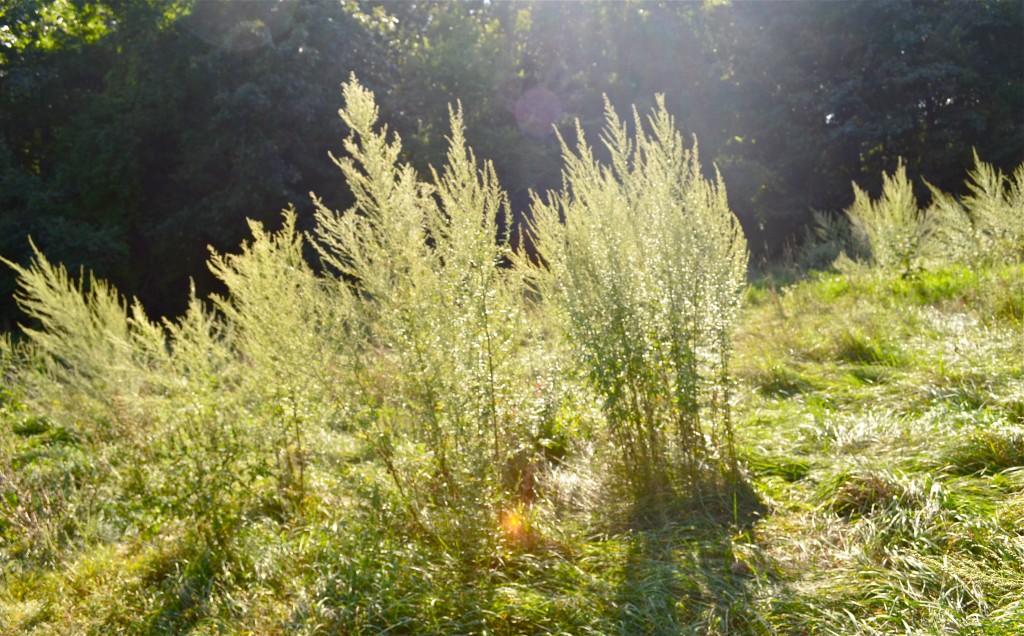These had feathery little flowers, and now with the cold weather, it’s time for the berries! Dr. Wesley Whiteside gave me these plants because I admired them in his garden, bright purple on bare branches in late October — they were just little twigs but they’ve done well. An important fall survival food for birds, when other sources are gone. Apparently, you can chop up a plant, boil and strain it, mix it with oil and beeswax to make a fabulous mosquito repellent. Also you can make jelly from the berries! (And yet, you can also use the leaves to make a poison to stun fish. Hm.) There is an indigenous form, American Beauty Berry, which has berries with no stems, clustered closer to the branch. This kind is native to Japan. Verbena family.
Japanese Beautyberry (Callicarpa japonica)

